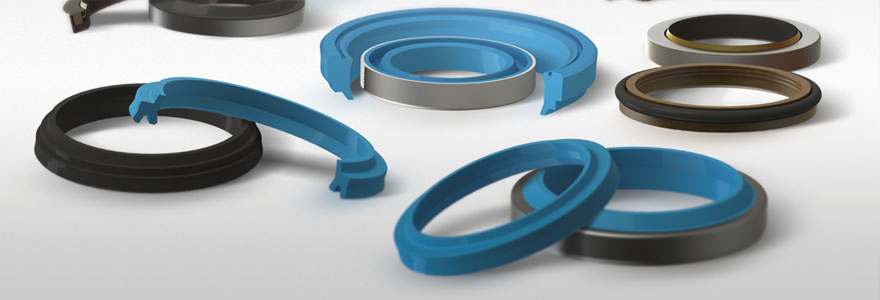WIPER SEALS
What Are Wiper Seals?
Wiper seals are components used in various mechanical systems to prevent the ingress of dirt, dust, and moisture, and to retain lubricants within the system. They are commonly found in hydraulic cylinders, automotive applications, and other machinery where moving parts need to be protected from contaminants.
Here are some key points about wiper seals:
1. Function: Their primary role is to keep contaminants out while allowing the moving parts to operate smoothly.
2. Material: Wiper seals are typically made from rubber, polyurethane, or other flexible materials that can withstand environmental conditions and wear.
3. Design: They often have a lip or edge that contacts the moving surface, effectively scraping away debris as the component moves.
4. Applications: Commonly used in automotive engines, hydraulic systems, and various industrial machinery where sealing is crucial for performance and longevity.
5. Maintenance: Regular inspection and replacement of wiper seals can prevent damage to internal components and maintain efficient operation.

Types of wiper seals?
Wiper seals come in various types, each designed for specific applications and operating conditions. Here are some common types:
1. Single Lip Wiper Seals: These have one sealing lip that scrapes contaminants away from the moving surface. They’re simple and effective for many applications.
2. Double Lip Wiper Seals: Featuring two sealing lips, these provide better protection against contamination and can also help retain lubrication.
3. U-Cup Wipers: Shaped like a “U,” these seals create a more effective sealing surface and are commonly used in hydraulic applications.
4. V-Ring Wipers: These have a V-shaped cross-section and are designed to maintain contact with the moving surface, offering good flexibility and sealing performance.
5. T-Seals: These consist of a T-shaped seal that offers robust protection against dirt and moisture, often used in more demanding environments.
6. Piston Wipers: Specifically designed for hydraulic pistons, these seals help prevent dirt and debris from entering the cylinder.
7. Scraper Seals: Focused on scraping away dirt and grime from the surface of moving parts, these seals are often used in conjunction with other sealing components.
8. Custom Wipers: For specialized applications, wiper seals can be custom-designed to fit specific dimensions and requirements.
Each type has its advantages depending on the environment, load conditions, and the type of motion involved.
Usage of wiper seals?
Wiper seals are used in various applications across multiple industries to ensure optimal performance and longevity of equipment. Here are some common usages:
1. Hydraulic Cylinders: In hydraulic systems, wiper seals prevent dirt and moisture from entering the cylinder while allowing the piston to move freely.
2. Automotive Applications: Used in shock absorbers, struts, and other suspension components, wiper seals keep contaminants out and maintain lubrication.
3. Industrial Machinery: In equipment like excavators and loaders, wiper seals protect hydraulic components from abrasive materials.
4. Pneumatic Systems: They help maintain pressure and prevent contamination in pneumatic cylinders and systems.
5. Marine Applications: Used in boat engines and other marine equipment to prevent water and salt intrusion.
6. Agricultural Equipment: Wiper seals in tractors and harvesters protect moving parts from mud and debris.
7. Construction Equipment: In heavy machinery like bulldozers and cranes, they guard against dirt and dust in harsh environments.
8. **Medical Devices**: In some medical equipment, wiper seals help maintain sterility and prevent contamination.
9. Robotics: Used in robotic joints and actuators to ensure smooth operation while keeping contaminants out.
By maintaining cleanliness and reducing wear, wiper seals play a critical role in the reliability and efficiency of many systems.

